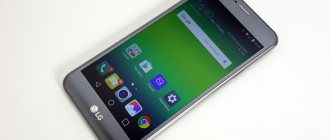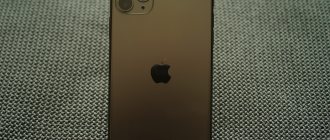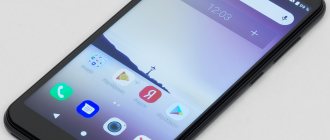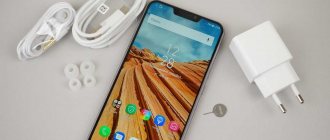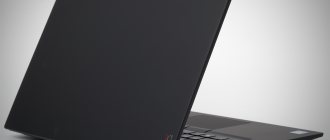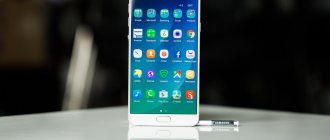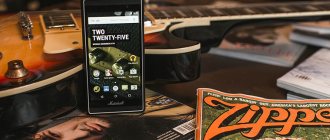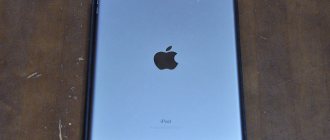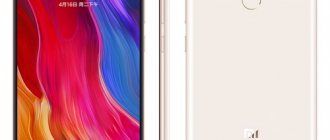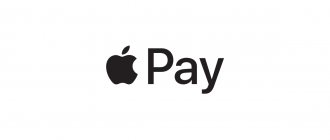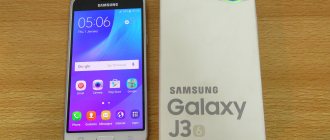Finally. Here it is, the most mythical iPhone, which was awaited more than any other model in Apple history. And also, probably, one of the most controversial, if you believe Russian commentators.
Experience is an invaluable thing. I remember well that the first iPhone SE caused a similar reaction. What happened next, you already know.
The new 2020 iPhone SE, also known as the iPhone 9 or SE 2, is designed for the future in a way that the previous model couldn't imagine.
With his left hand he puts 99% of Android flagships on the shoulder, and with his right hand he puts on the laurels of one of the two best camera phones in the mid-price category. Topic: Why I bought an iPhone SE in 2018.
A small miracle It is this backlog, plus the price movement (down) in different countries, that will determine the popularity of the new iPhone SE in a year and a half. Not earlier.
Something else is also important. The voices of people who rarely visit sites like iPhones.ru are becoming louder and more confident. Anyone who doesn’t read technology news every day, doesn’t watch tech bloggers from YouTube, and has no idea what firmware version is on their smartphone.
These are people for whom a smartphone is exclusively a tool for solving problems, and not a gadget. Three things are important to them.
▸ To work quickly.
▸ To work well.
▸ To work predictably - the same as yesterday.
They buy a new smartphone to help them get things done. Dot. It is for these people that the new iPhone SE was released: red, like a Swiss army knife, which has everything you need in the best possible way... and nothing more.
I've been using the PRODUCT (RED) 256 GB iPhone SE for three days now, and I want to share my most notable impressions. I warn you right away: this article may be updated without warning for a couple of days. So if you don’t find the answer to the question you need, come here again a little later.
You can guess the iPhone SE package yourself
There are no surprises, I have already divided the unboxing into 11 (yes, eleven) videos and described to the smallest detail what awaits the buyer of the iPhone SE in the first minutes.
Topic: Unboxing the new 2020 iPhone SE. Couldn't be redder
I will repeat the set for those who are too lazy to click:
▪ EarPods with Lightning cable ▪ USB to Lightning cable, regular, not Type-C ▪ 5 W charger
There is no headphone adapter. Buy any of the two hundred wireless headphones already, be it AirPods, Beats or anything else. Or take the adapter separately, since it costs about 790 rubles.
The packaging of the red iPhone SE 2020 differs from the others only in the box and a single insert describing the “mission” of the PRODUCT (RED) project. Currently, a portion of the proceeds from the sale of all red Apple gadgets and accessories is going to the COVID-19 Fund. True, they didn’t have time to update the inserts; it still says about supporting the AIDS Foundation.
On the one hand, it was disappointing that there was a very simple charging adapter. On the other hand, it would be strange if they put a pumped-up 18-watt version here, and left the 5-watt version in the iPhone 11 kit (that’s where the injustice lies!). Plus, the battery on the SE is not large enough in terms of mAh to be equipped with a “super charger” for such a smartphone.
It is very thin, very light. And small
It would seem, well, it’s obvious, Nikita, what you’re talking about here.
But wait. I carry my iPhone 11 Pro Max every day. I already forgot that there are iPhones that are smaller, lighter or thinner. I also don’t remove the leather case. Previously there was also protective glass.
And when I took out the new iPhone SE, I had this strange feeling as if something was wrong. It is so small, light, portable, one-handed, that out of habit you are afraid to use it, in case it slips through your hand.
Much of this is the real reason for people to buy the iPhone SE. “Shovels” are not suitable for everyone.
This is fluff, no less: the iPhone SE weighs some 148 grams . The previous one was of course lighter, only 113 grams (23% lighter than the new one). But the iPhone 5c was heavier, 132 grams. So, depending on what you compare it to... I didn’t feel any really noticeable regression.
And since we’re comparing, the iPhone 11 Pro Max without a case, without glass, weighs 226 grams. It turns out that it’s 35% more than the iPhone SE 2020. That’s where you notice the difference right away.
In general, it turned out to be a small, nimble iPhone. Don't be nostalgic for the old SE, the train has left. It's enough that app developers around the world quietly hate it.
Display and Touch ID: Back 2 years
Oh those frames! Everyone would be only glad if they were not there.
At the same time, I still can’t feel too sad about their presence, no matter how hard I try. All information both on websites and in applications fits comfortably on the screen. I didn’t notice any discomfort when working with instant messengers or typing text.
There is even a “bonus”: you can watch YouTube without black frames. Most videos fit cheerfully in full screen. There is no need to hang around between “cut off a little” and “why is it so small now”, as on the iPhone X, Xs, 11 and so on.
Topic: What is the difference between the new iPhone SE and the old iPhone 8
The color reproduction here is similar to the iPhone 8, and therefore it’s good that Apple added True Tone in that generation. I never turn it off because it greatly improves color perception in difficult lighting conditions, especially at home in the evenings.
I noticed that the screen here is dimmer than that of the iPhone 11 and especially the 11 Pro Max. Their increase in brightness bypassed the new iPhone SE, which is logical, since we are talking about the actual display from the iPhone 8.
Topic: What is the difference between the new iPhone SE and the iPhone 11
There's also no 3D Touch, which was present in the iPhone 6s, 7, 8, iPhone X and iPhone Xs. We have already found out that it cannot be turned on even if the display module is transplanted. That's it, it's time to say goodbye to this feature; it hasn't stood the test of time. Although you get bored sometimes, I admit.
Overall, my only complaint about the screen is that the brightness is a little lacking . Everything else is more than worthy for a person with balanced needs.
Whoever is the first to say “android has a bigger and clearer screen for 15 thousand” will receive a penalty: 24 hours of continuous viewing of photos on this “android”. I allow 2 breaks of 5 minutes to look at the new iPhone SE so that my eyes don’t atrophy.
I’d like to say this about Touch ID: it’s fast and works great. The same second-generation sensor was in the iPhone 8. It is also installed in the MacBook.
But I love Face ID and don't want anything else. The best is the enemy of the good, right?
Why doesn't Apple Pay process the payment?
If payment does not go through when testing NFC, you should suspect one of the reasons that could lead to this problem:
- Faulty terminal. Before you think that your smartphone is to blame for your inability to pay for purchases, you should assume that it is the cashless payment terminal that is faulty. You can check this by trying to make a purchase in another store.
- Conflicting accessories. If your iPhone uses a thick case, magnetic holder or other accessory, it is recommended to remove everything completely, as they can easily prevent the payment terminal from picking up the iPhone signal.
- System failure. The operating system may not work correctly, and therefore you may not be able to pay for your purchase. Just try rebooting your phone.
Read more: How to reboot your iPhone
- Failed to connect the card. The bank card may not have been linked the first time. Try removing it from the Wallet app and then linking it again.
- Incorrect firmware operation.
In more rare cases, the phone may need to be completely reinstalled. This can be done through the iTunes program, having first entered the iPhone into DFU mode. Read more: How to put iPhone into DFU mode - The NFC chip has failed. Unfortunately, this problem occurs quite often. You won’t be able to solve it yourself - only by contacting a service center, where a specialist can replace the chip.
With the advent of NFC to the masses and the release of Apple Pay, the life of iPhone users has become much more convenient, because now there is no need to carry a wallet with you - all bank cards are already in the phone.
We are glad that we were able to help you solve the problem.
Describe what didn't work for you. Our specialists will try to answer as quickly as possible.
In order to use the contactless payment service, the following conditions must be met:
- purchase a device that supports the option;
- apply for a bank card from program partners;
- update your phone to the latest version;
- install the Apple Pay app (download is free).
Next, you should link the card to the gadget you are using. Moreover, each device has its own procedure. See below for more details.
Via phone
In this case, first you need to purchase an iPhone 6 or a newer version. Next, use the following instructions to add a card on your iPhone:
- Launch the Wallet program (installed by default).
- Click on the " " icon.
- After this, you will be asked to connect a card that is already linked to iTunes or add a new one. In the first case, you only need to enter the security code.
- When choosing the second option, the user will be required to provide information about his plastic card (number, expiration date, CVV/CVC codes from the card and the owner’s full name).
- Once the information verification is complete, click Next.
This completes the binding. After this, you can successfully make purchases using your phone. To do this, you just need to bring your phone to the terminal and confirm the transaction through the fingerprint scanner.
Using a watch
Owners of a device such as the Apple Watch can also take advantage of this option. To do this, they only need to add a card. The binding procedure in this case is performed as follows:
- Go to Apple Watch from your iPhone.
- Open the "My Watch" tab.
- Then go to "Wallet and A Pay".
- Activate the card through iTunes by entering the security code or add a new one by providing the requested information.
- Please wait for the specified information to be processed.
Once the verification is completed, you can start using the service.
NFC technology allows you to make purchases using your phone. It is available on all modern versions of the iPhone, starting with the 6 series, as well as on smart watches. To use the service, you need to set it up on your iPhone (instructions for connecting are presented above).
The iOS operating system can be unstable, which sometimes leads to app crashes. Including Apple Pay. It is not always possible to check its performance at home, but there are two options.
Without terminal
You can visit a fast food establishment that has a self-service system. All you have to do is order the cheapest product and try to pay for it with Apple Pay. If it doesn't work, cancel the order.
At home
Place an order online for something cheap. When paying, select the method - via Wallet. If the purchase does not go through, it means there are problems with the application.
Apple has equipped not only phones but also apple watches with NFC chips, reaching a new level of customer convenience. Many people have found it very convenient to pay for travel, purchases, make reservations and then redeem tickets using watches.
The very idea of a wristwatch with additional functionality is not new, but the NFC antenna built into the watch, along with Bluetooth and Wi-Fi, has significantly expanded the functionality of the watch. Let me give you an example: you are walking down the street and saw a poster advertising a fitness center, using the watch you get a business card, then using geolocation you find the location of the gym, pay for a one-time visit using an apple watch, the built-in fitness tracker shows good results, and when you leave you You sign up and pay for a monthly subscription, using only your watch during this time.
Apple Watch on Yandex Market
The A13 processor is so powerful that it remotely warms many chairs
Is there something smoking on the horizon? Order, don't panic. There, someone comments on one of the hundreds of articles about how the A13 in a $400 smartphone is tearing apart top-end Androids for $999.
Jokes aside, the power of the A13 not only exceeds, but goes in circles around all the other characteristics of the new iPhone SE. You can play games with TOP settings and the best possible graphics. iOS 13 flies faster and more comfortably than Emirates. Heavy applications on a small screen seem to be wondering where the new Apple smartphone comes from so much power.
The company's success in the world of mobile processors is undeniable, and therefore Cupertino can afford to include in the iPhone SE a performance reserve for at least 3 years in advance, if not more.
However, the new iPhone will get quite hot in games.
I’ll add performance measurements here a little later, but I already know their results and therefore I’ll say right away: there is such a small difference between the iPhone 11 Pro Max and the iPhone SE 2020 that somehow I even feel sorry for the “big brother” - it doesn’t really show off any “parrots” , no frames/sec.
Don't forget that there is also 3 GB of RAM. This is not 4 GB, as in the iPhone 11, but it is still enough for all current software and games for iOS to work perfectly.
Video
iPhones are the main smartphones that shoot high-quality videos. If you not only take photographs, but also shoot videos, then you need to buy an iPhone - it has excellent sound and an excellent picture.
At least this is true for the iPhone 11 Pro. But what can we say about the iPhone SE? I recorded a short video where you can look not only at the stabilization work of this iPhone, but also compare the sound recording quality with all the smartphones mentioned in this text:
Rumors about a weak battery were exaggerated
Here you need to clearly separate facts from statistics.
I absolutely agree that the new iPhone SE has a “skinny” battery by the standards of 2020, and the 19th, and the 18th too.
1821 mAh is the same capacity as the iPhone 8. And the iPhone 8, in turn, has earned a “so-so” reputation for battery life. These are the facts.
The statistics, at least mine, tell a slightly different story.
If you squeeze the maximum out of your iPhone : it will be discharged in 4-5 hours. The interest will melt every 3 minutes or faster.
By maximum load, I mean simultaneously connecting wireless headphones via Bluetooth, streaming Apple Music in the background, screen brightness above average, Safari, Telegram, YouTube, games from the App Store, auto-updates, camera, everything is included.
In this mode, the iPhone SE deflated in about 4.5 hours. I stopped tormenting it at 4% charge and connected it to the outlet. The iPhone 11 Pro Max would work 2 times longer - it can, it can.
If used moderately, as usual : 8-12 hours. That is, from morning to evening.
By moderate use, I mean a little background music via Bluetooth headphones, periodic 10-minute sessions in a web browser (Safari) and instant messenger (Telegram), about half an hour on YouTube, half an hour of games (Fortnite), half an hour of email, 20 minutes of calls , a total of 30 minutes in iMessage. And between them there are pauses. In general, the workload of a normal person.
In this situation, the iPhone SE lived with me from 9:30 am not only until the evening - at 6 am the next day it showed another 38%. Yes, the breaks were long, but the overall workload successfully simulated how I would use the iPhone in reality, on a normal workday.
What can we conclude from this: the iPhone SE can be quickly discharged if you try. But for the majority, it will live peacefully from morning until late evening . For mega-active users, there is always a charger, portable batteries, laptops, and even an iPad Pro will do. Wireless storage is also supported.
Well, I’m wondering how many people imagine such a thin and light iPhone, but with a battery level of the iPhone 11 Pro Max. You will take them in your hands at the same time! "Promax" will seem like a brick. How else could it be? Either checkers or go.
Mega-gadget lovers are not SE's audience. So their requirements, along with the desire to look at displays 24/7, are simply inappropriate to extend to a smartphone with a “folk” origin. For everyone else, the new iPhone’s battery will be enough for everything they need.
And one last thing: the camera is very unusual
I've spent half a day sorting through photos from my comparison of the rear cameras of the iPhone 11 Pro Max and iPhone SE 2020. Why is it taking so long? It’s just very difficult to tell by eye which photo was taken by which smartphone. Especially during the day.
I decided to finish the review first, and then add a piece with comparisons here, otherwise it will drag on until tomorrow. Preliminary conclusions about the rear camera: the photos are better than on the iPhone 8, X, XR and even XS. But no better than on the iPhone 11 or 11 Pro (Max).
The strength of the iPhone SE is that its A13 processor supports all the same photo enhancers as the iPhone 11/11 Pro. This also applies to the newest version of Smart HDR. Bright elements in photographs, both during the day and at night, are no longer illuminated, as was the case on iPhones before the “eleventh”. The sky is now always visible, even when shooting portraits against sunlight.
And what a video! This is officially the best video camera in a smartphone under 45 thousand rubles, here Apple completely confidently defeats everyone. The same iPhone 8, for example, does not have an extended range of colors when shooting in 4K, and its stabilization is not even close to what the iPhone SE can do. Everything is very smooth and clear even in motion.
An innovation of the iPhone SE, which has already been tested by the iPhone XR and 11, is portrait mode with one camera. For the first time, machine learning technologies are used here to identify objects in the frame and draw a blur depth effect around them. Again, thanks to the A13 processor.
Shot on the front cameras of iPhone SE (2020) and iPhone 11 Pro Max
Shot on the front cameras of iPhone SE (2020) and iPhone 11 Pro Max
According to my tests, the blur is really decent, but does not reach the iPhone 11 Pro's accuracy in identifying small objects. For example, hair may not blur correctly.
And in portrait mode you can only photograph people, not objects. Alas, this requires two cameras.
The front camera does not disappoint: photos are clear, with realistic facial texture and excellent lighting conditions. After shooting, you can apply the same creative effects (like scenic photography) to portraits as on iPhone 11. Guess why. Hint: number 13.
But the night mode that appeared in the iPhone 11 is not here at all. And therefore, in the dark or at home, the flagship iPhone confidently defeats the iPhone SE, to the point that only a black rectangle is visible in the second one in the viewfinder instead of a decent frame on the Pro Max.
Shot at night using the rear camera of the iPhone SE (2020) and the main rear camera of the iPhone 11 Pro Max
Example photo from the front camera of iPhone SE (2020)
In general, the cameras on the iPhone SE are excellent, and for the vast majority their shooting quality will be sufficient.
Most of the improvements of recent years (especially in the way noise is processed) have been carried over to the "budget" iPhone, and therefore it can take better photos than, say, the iPhone X. Except there is no telephoto or ultra-wide...
Detailed review and testing of Apple iPhone SE
Like many Apple announcements over the past few years, the iPhone SE announcement was both expected and unexpected. Expected - in terms of the general idea: everyone was ready for Apple to release a cheaper smartphone with a small display diagonal. The surprise was that the body of the new product turned out to be exactly identical to the iPhone 5s, and the hardware characteristics, on the contrary, were inherited from the iPhone 6s, Apple’s current flagship.
Let's take a look at the characteristics of the new product.
Apple iPhone SE Specifications
- Apple A9 SoC 1.8 GHz (2 64-bit cores, ARMv8-A based architecture)
- Apple A9 GPU
- Apple M9 motion coprocessor including barometer, accelerometer, gyroscope and compass
- RAM 2 GB
- Flash memory 16 / 64 GB
- No memory card support
- Operating system iOS 9.3
- Touch display IPS, 4″, 1135×640 (324 ppi), capacitive, multi-touch
- Cameras: front (1.2 MP, 720p video) and rear (12 MP, 4K video)
- Wi-Fi 802.11b/g/n/ac (2.4 and 5 GHz; MIMO support)
- Cellular: UMTS/HSPA/HSPA+/DC-HSDPA (850, 900, 1700/2100, 1900, 2100 MHz); GSM/EDGE (850, 900, 1800, 1900 MHz), LTE Bands 1, 2, 3, 4, 5, 7, 8, 12, 13, 17, 18, 19, 20, 25, 26, 27, 28, 29, 30, 38, 39, 40, 41
- Bluetooth 4.2 A2DP LE
- Touch ID fingerprint scanner
- NFC (Apple Pay only)
- 3.5mm stereo headset jack, Lightning dock connector
- Li-polymer battery 1624 mAh, non-removable
- GPS / A-GPS, Glonass
- Dimensions 123.8×58.6×7.6 mm
- Weight 113 g (our measurement)
For clarity, let’s compare the characteristics of the new product with the iPhone 6s, iPhone 5s (since this is what the new product is replacing), as well as with the Sony Xperia Z5 Compact - this is perhaps the main competitor of the iPhone SE at the moment.
| Apple iPhone SE | Apple iPhone 6s | Apple iPhone 5s | Sony Xperia Z5 Compact | |
| Screen | 4″, IPS, 1136×640, 324 ppi | 4.7″, IPS, 1334×750, 326 ppi | 4″, IPS, 1136×640, 324 ppi | 4.6″, 1280×720, 423 ppi |
| SoC (processor) | Apple A9 (2 cores @1.8 GHz, 64-bit ARMv8-A architecture) | Apple A9 (2 cores @1.8 GHz, 64-bit ARMv8-A architecture) | Apple A7 @1.3 GHz 64 bit (2 cores, Cyclone architecture based on ARMv8) | Qualcomm Snapdragon 810 (8 Cortex-A57 @2.0 GHz + 4 Cortex-A53 @1.55 GHz) |
| GPU | Apple A9 | Apple A9 | PowerVR SGX 6 Series | Adreno 430 |
| Flash memory | 16/64 GB | 16/64/128 GB | 16/32/64 GB | 32 GB |
| Connectors | Lightning dock connector, 3.5mm headset jack | Lightning dock connector, 3.5mm headset jack | Lightning dock connector, 3.5mm headset jack | Micro-USB with OTG and MHL 3 support, 3.5mm headset jack |
| Memory card support | No | No | No | microSD (up to 200 GB) |
| RAM | 2 GB | 2 GB | 1 GB | 3 GB |
| Cameras | main (12 MP; video recording 4K 30 fps, 1080p 120 fps and 720p 240 fps) and front (1.2 MP; video recording and transmission 720p) | main (12 MP; video shooting 4K 30 fps, 1080p 120 fps and 720p 240 fps) and front (5 MP; shooting and transmitting Full HD video) | main (8 MP; video recording 1080p 30 fps and 720p 120 fps) and front (1.2 MP; video recording and transmission 720p) | main (23 MP, 4K video shooting) and front (5.1 MP, Full HD video) |
| Internet | Wi-Fi 802.11 a/b/g/n/ac MIMO (2.4 GHz + 5 GHz), 3G / 4G LTE+ (LTE-Advanced) | Wi-Fi 802.11 a/b/g/n/ac MIMO (2.4 GHz + 5 GHz), 3G / 4G LTE+ (LTE-Advanced) | Wi-Fi 802.11 a/b/g/n (2.4 GHz + 5 GHz), 3G / 4G LTE | Wi-Fi 802.11 a/b/g/n/ac MIMO (2.4 GHz + 5 GHz), 3G / 4G LTE+ (LTE-Advanced) |
| Battery capacity (mAh) | 1624 | 1715 | 1570 | 2700 |
| operating system | Apple iOS 9.3 | Apple iOS 9 | Apple iOS 7 (upgrade to iOS 9.3 available) | Google Android 6.0 |
| Dimensions (mm)* | 124×59×7,6 | 138×67×7,1 | 124×59×7,6 | 127×65×8,9 |
| Weight (g)** | 113 | 143 | 112 | 138 |
| average price | T-13584121 | T-12858630 | T-10495456 | T-12840987 |
| Apple iPhone SE (16GB) offers | L-13584121-5 | |||
| Apple iPhone SE (64GB) offers | L-13584123-5 | |||
*according to manufacturer's information **our measurement
The table clearly shows that, with the exception of the screen, dimensions and battery capacity, the characteristics of the iPhone 6s and iPhone SE are identical. But there is no option with 128 GB of internal memory, which, of course, is a minus (especially considering the possibility of shooting in 4K). In turn, the dimensions and screen are similar to the iPhone 5s, but all other parameters have become much more advanced. Even the battery capacity has increased, although the body is the same.
As for comparison with Android competitors, things are not so simple here. Apple devices lag behind in almost all characteristics, but, as we have repeatedly seen, this may not directly affect real performance and other user qualities. So let's proceed directly to testing.
Packaging and equipment
The packaging of the iPhone SE is much closer to the iPhone 6s than the iPhone 5s. This is evidenced by both the overall light color scheme and the picture on the smartphone screen.
The packaging of Apple smartphones has not contained any surprises for a long time. The new product is no exception. Here are the EarPods, enclosed in a beautiful box, leaflets, a charger (5 V 1 A), a Lightning cable, stickers and a key for removing the SIM card cradle.
Design
Now let's look at the design of the iPhone SE itself. The first emotion when you take it out of the box: my God, how small and, at the same time, plump!
In fact, the dimensions of the new product exactly match the iPhone 5s. Down to the millimeter. However, in the two and a half years that have passed since the release of the iPhone 5s, we have already become accustomed to a smaller thickness and, of course, a significantly larger screen. It’s not for nothing that Sony’s Compact model has a diagonal of 4.6 inches. And the Chinese have already stopped producing fewer smartphones. So four inches looks like an outright atavism.
But this is exactly the case when the opinion of technologists does not coincide with the opinion of many ordinary users, among whom the iPhone 5s is still popular. And although for some of them this is due solely to financial reasons, others simply prefer compact models. The iPhone SE is aimed at them.
Strictly speaking, there are only three design differences from the iPhone 5s. The first is the new Rose Gold color. We have seen this color in all the latest generation of Apple mobile products, but now it is available on a compact smartphone. The girls will probably be happy. Not only is it beautiful in itself, but it also emphasizes that you don’t have some old iPhone 5s, but the very newest thing. However, three other color options (gold, dark gray and silver) are also available.
The second design element that has undergone changes compared to the iPhone 5s is the branded apple. Now it is not pressed into the metal surface, but is made of glossy metal as an independent block, inserted into the body and slightly recessed - like the iPhone 6s and 6s Plus. It looks elegant, but, in essence, it is such a trifle that you can hardly catch it with your eyes unless you specifically look closely.
Finally, the last detail that helps not to confuse the iPhone SE with the iPhone 5s is the letters SE directly below the word iPhone on the back of the device. However, obviously, this does not in any way affect the perception of the design. Otherwise, the smartphones are absolutely identical: the material, the location and shape of the buttons, the connectors - everything is exactly like the iPhone 5s. As a plus, we note that although the camera here is significantly better, it does not protrude above the body at all (as is the case with all iPhones with a six in their name).
An interesting question is what version of the Touch ID fingerprint scanner is installed in the smartphone. As we remember, a new version of the scanner debuted in the iPhone 6s/6s Plus, which works faster and more accurately. Owners of these models know that they only need to quickly touch their finger and immediately pull it away for the smartphone to recognize the owner. Since Apple doesn't give details about the version of Touch ID in the iPhone SE, we tested it with a simple comparison - pressing the Home button on the iPhone 6s Plus and iPhone SE at the same time. The result is clear: the fingerprint scanner in the iPhone SE is slower. That is, apparently, it is the same here as in the iPhone 5s.
In general, the design of the iPhone SE can be called a time-tested classic (although it looks somewhat archaic compared to modern devices, even in the middle segment). Two cosmetic innovations - a new color and a differently designed logo - do not affect the overall impression. In terms of appearance, this is just an iPhone 5s. No more and no less, no better and no worse.
Screen
The screen parameters of the iPhone SE do not differ from those of the iPhone 5s: 4-inch diagonal, IPS matrix with a resolution of 1136×640. By modern standards - very little: both diagonal and resolution (less than 720p is difficult to find even in the mid-budget segment).
It is also important that the iPhone SE screen does not support 3D Touch technology.
However, technical characteristics and the presence or absence of additional technologies are just the tip of the iceberg. A comprehensive examination of the quality of the iPhone SE screen was carried out by the editor of the “Projectors and TV” section, Alexey Kudryavtsev.
The front surface of the screen is made in the form of a glass plate with a mirror-smooth surface that is scratch-resistant. Judging by the reflection of objects, the anti-glare properties of the screen are better than those of the Google Nexus 7 (2013) screen (hereinafter simply Nexus 7). For clarity, here is a photograph in which a white surface is reflected when the screens are turned off (on the left is Nexus 7, on the right is Apple iPhone SE, then they can be distinguished by size):
The screen of the Apple iPhone SE is slightly darker (brightness according to photographs is 104 versus 110 for the Nexus 7). The ghosting of reflected objects in the Apple iPhone SE screen is very weak, this indicates that there is no air gap between the layers of the screen (more specifically, between the outer glass and the surface of the LCD matrix) (OGS - One Glass Solution type screen). Due to the smaller number of boundaries (glass/air type) with very different refractive indices, such screens look better in conditions of strong external illumination, but their repair in the case of cracked external glass is much more expensive, since the entire screen has to be replaced. The outer surface of the screen has a special oleophobic (grease-repellent) coating (effective, but still no better than that of the Nexus 7), so fingerprints are removed much more easily and appear at a slower rate than with regular glass.
When manually controlling the brightness and displaying the white field in full screen, the maximum brightness value was about 610 cd/m², the minimum was 6 cd/m². The maximum brightness is very high, and given the excellent anti-glare properties, readability will be ensured even on a sunny day outdoors. In complete darkness, the brightness can be reduced to a comfortable value. There is automatic brightness adjustment based on the light sensor (located to the left of the front speaker). In automatic mode, as external lighting conditions change, the screen brightness both increases and decreases. The operation of this function depends on the position of the brightness adjustment slider - the user can use it to try to set the desired brightness level for the current conditions, but we cannot predict what the brightness will be in other conditions and simply when changing and returning the level of external illumination. If you don’t touch anything, then in complete darkness the automatic brightness adjustment function reduces the brightness to 6 cd/m² (too dark), in an office illuminated by artificial light (about 400 lux) the brightness increases to 100-140 cd/m² (normal), in in a very bright environment (corresponding to the lighting of a clear day outdoors, but without direct sunlight - 20,000 lux or a little more) is set to 500 cd/m² (this is enough). We were more satisfied with the option obtained after several attempts at brightness correction in different conditions, and for the three conditions indicated above we received 8, 115 and 600 cd/m². It turns out that the auto-brightness function works more or less adequately, and there is some possibility of adjusting the nature of the brightness change to the user’s requirements, although there are some not obvious features in its operation. At any brightness level, there is no significant modulation of the backlight, so there is no flickering of the screen (or rather, at minimum brightness there are very narrow peaks with a frequency of 50 Hz, but flickering was still not noticeable even with great effort).
This smartphone uses an IPS matrix. The microphotographs show a typical IPS subpixel structure:
For comparison, you can see the gallery of microphotographs of screens used in mobile technology.
The screen has good viewing angles without significant color shift even with large viewing deviations from perpendicular to the screen and without inverting shades. For comparison, here are photographs in which the same images are displayed on the screens of the Apple iPhone SE and Nexus 7, while the brightness of the screens is initially set to approximately 200 cd/m² (across the white field across the entire screen, on the Apple iPhone SE this corresponds to a value of 60% brightness at using third-party programs), and the color balance on the camera is forcibly switched to 6500 K. There is a white field perpendicular to the screens:
Note the good uniformity of brightness and color tone of the white field. And a test picture:
Color balance varies slightly, color saturation is normal. Now at an angle of approximately 45 degrees to the plane and to the side of the screen:
It can be seen that the colors did not change much on both screens and the contrast remained at a high level. And a white field:
The brightness at an angle of the screens decreased (at least 5 times, based on the difference in shutter speed), but in the case of the Apple iPhone SE the drop in brightness is slightly less. When deviated diagonally, the black field is lightened weakly and acquires a light red-violet tint. The photographs below demonstrate this (the brightness of the white areas in the direction perpendicular to the plane of the screens is approximately the same!):
And from another angle:
When viewed perpendicularly, the uniformity of the black field is good:
The contrast (approximately in the center of the screen) is normal - about 760:1. The response time for the black-white-black transition is 20 ms (11 ms on + 9 ms off). The transition between halftones of gray 25% and 75% (based on the numerical value of the color) and back takes a total of 25 ms. The gamma curve, constructed using 32 points with equal intervals based on the numerical value of the shade of gray, did not reveal any blockage in either the highlights or the shadows. The power function fitting exponent is 1.93, which is lower than the standard value of 2.2, so the image is slightly brightened. In this case, the real gamma curve deviates little from the power-law dependence:
Color gamut is almost equal to sRGB:
Apparently, the matrix filters mix the components with each other to a moderate extent. The spectra confirm this:
As a result, visually the colors have a natural saturation. The balance of shades on the gray scale is good, since the color temperature is slightly higher than the standard 6500 K, and the deviation from the blackbody spectrum (ΔE) is less than 10, which is considered an acceptable indicator for a consumer device. At the same time, color temperature and ΔE change little from hue to hue - this has a positive effect on the visual assessment of color balance. (The darkest areas of the gray scale can be ignored, since color balance there is not very important, and the error in measuring color characteristics at low brightness is large.)
Like the 9.7-inch Apple iPad Pro, the iPhone SE has Night Shift
, which makes the picture warmer at night (the user specifies how much warmer).
The graphs above show the values obtained with the middle position of the slider of the Color Temperature
(by the way, correctly - “color temperature”), when shifted all the way to
Warmer
and to
Colder
(the graphs are labeled in the appropriate way).
Yes, the color temperature decreases, which is what is required. A description of why such a correction can be useful is given in the specified article about the iPad Pro 9.7. In any case, when having fun with a mobile device at night, it is better to reduce the screen brightness to a minimum, but still comfortable level, and only then, to calm your own paranoia, turn the screen yellow using the Night Shift
.Let's summarize. The screen has a very high maximum brightness and has excellent anti-glare properties, so the device can be used outdoors without any problems, even on a sunny summer day. In complete darkness, the brightness can be reduced to a comfortable level. It is also possible to use a mode with automatic brightness adjustment, which works more or less adequately. The advantages of the screen include an effective oleophobic coating, the absence of an air gap in the layers of the screen and flicker, high black stability to deviation of the gaze from perpendicular to the screen plane, good uniformity of the black field, as well as the sRGB color gamut and good color balance. There are no significant shortcomings. Currently, this is perhaps the best display among small-screen smartphones.
Performance and Heat
The iPhone SE runs on the same Apple A9 SoC as the iPhone 6s. This means that there is also an Apple M9 coprocessor, which provides support for the voice unlocking function (with the “Hey Siri!” command).
It is important that the CPU frequency in the iPhone SE is not reduced. We outlined the details about the SoC in the article about the iPhone 6s, so we won’t repeat ourselves and go straight to testing. In addition to the main testing hero, we included the iPhone 6s Plus and iPhone 5s in the table, since our main tasks are to understand whether there are any differences in the performance of the iPhone SE compared to other smartphones based on the Apple A9, and also how much faster the new product is than iPhone 5s. As for comparison with Android competitors, as we previously found out, the Apple A9 is still the leader, so there is simply no point in such a comparison in the case of the iPhone SE.
Let's start with browser tests: SunSpider 1.0.2, Octane Benchmark, Kraken Benchmark and JetStream. We used the Safari browser throughout.
| Apple iPhone SE (Apple A9) | Apple iPhone 6s Plus (Apple A9) | Apple iPhone 5s (Apple A7) | |
| SunSpider 1.0.2 (less is better) | 233 ms | 217 ms | 419 ms |
| Octane 2.0 (bigger is better) | 16408 points | 16009 points | 3584 points |
| Kraken Benchmark 1.1 (less is more) | 1692 ms | 1707 ms | 5968 ms |
| JetStream (bigger is better) | 119 points | 115 points | — |
The result is predictable: we see approximate parity between the iPhone SE and iPhone 6s Plus, as well as a huge superiority (three to four times) over the iPhone 5s. We emphasize that different versions of operating systems and browsers could have caused some error, so a small difference between the two Apple A9 smartphones should not be confusing.
Now let's see how the iPhone SE performs in Geekbench 3 and AnTuTu 6 - multi-platform benchmarks. Unfortunately, we don't have results for the iPhone 5s, because at the time we tested it, AnTuTu did not support iOS at all, and Geekbench was available in a previous version. Therefore, you will have to be content with the results of the latest smartphones.
| Apple iPhone SE (Apple A9) | Apple iPhone 6s Plus (Apple A9) | |
| AnTuTu 6 (bigger is better) | 127449 points | 132141 points |
| Geekbench 3 Single-Core Score (higher is better) | 2552 points | 2505 points |
| Geekbench 3 Multi-Core Score (bigger is better) | 4444 points | 4396 points |
Here is a more strange result: the slight but still present superiority of the iPhone SE over the iPhone 6s Plus in Geekbench, as well as, on the contrary, the lag in AnTuTu, attracts attention.
The last group of benchmarks is dedicated to testing GPU performance. We used 3DMark, GFXBench Metal (in the case of the iPhone 5s, the results are from a simple GFXBench) and Basemark Metal.
Let us remind you that Offscreen tests involve displaying images in 1080p, regardless of the actual screen resolution. And Onscreen tests mean displaying a picture in the resolution that matches the device screen resolution. That is, Offscreen tests are indicative from the point of view of the abstract performance of the SoC, and Onscreen tests are indicative from the point of view of the comfort of the game on a specific device.
| Apple iPhone SE (Apple A9) | Apple iPhone 6s Plus (Apple A9) | Apple iPhone 5s (Apple A7) | |
| GFXBenchmark Manhattan 3.1 (Onscreen) | 58.0 fps | 27.9 fps | — |
| GFXBenchmark Manhattan 3.1 (1080p Offscreen) | 25.9 fps | 28.0 fps | — |
| GFXBenchmark Manhattan (Onscreen) | 59.4 fps | 39.9 fps | — |
| GFXBenchmark Manhattan (1080p Offscreen) | 38.9 fps | 40.4 fps | — |
| GFXBenchmark T-Rex (Onscreen) | 59.7 fps | 59.7 fps | 25 fps |
| GFXBenchmark T-Rex (1080p Offscreen) | 74.1 fps | 81.0 fps | 27 fps |
As we can see, even the most resource-intensive 3D scenes do not cause any difficulties for the iPhone SE. Here, of course, the matter is not only in the SoC, but also in the low screen resolution. Hence the difference with the iPhone 6s Plus in Onscreen modes. Interestingly, in Offscreen mode, the larger model slightly outperforms the compact newcomer. But the user doesn't care about this. The main thing for him is that any games on the iPhone SE will simply fly.
Next test: 3DMark. Here we are interested in the Sling Shot Extreme and Ice Storm Unlimited subtests.
| Apple iPhone SE (Apple A9) | Apple iPhone 6s Plus (Apple A9) | |
| 3DMark (Sling Shot Extreme) | 1655 points | 2108 points |
| 3DMark (Ice Storm Unlimited mode) | 29197 points | 29097 points |
The significant superiority of the iPhone 6s Plus over the iPhone SE in the most difficult test, Sling Shot Extreme, looks rather strange. It would be logical to assume that the GPU of the cheaper iPhone operates at a reduced frequency. And this looks like a completely logical solution, since with a significantly lower screen resolution the load on the GPU becomes lower.
Finally - Basemark Metal.
| Apple iPhone SE (Apple A9) | Apple iPhone 6s (Apple A9) | |
| Basemark Metal | 852 points | 940 points |
And here is a similar picture, strengthening us in the assumption made above. But despite the slight loss to the iPhone 6s in points, the iPhone SE demonstrated a significantly higher number of frames per second during the test - from 38 to 45, while the iPhone 6s Plus barely jumped over the border of 30 fps. Therefore, even a game of this level will not be a problem for the iPhone SE.
One more thing to note: during testing in Basemark Metal, the iPhone SE got very hot. Below is a thermal image of the back surface obtained after two consecutive runs (about 10 minutes of work) of the Basemark Metal test:
It can be seen that the heating is localized in the upper right part of the device, which apparently corresponds to the location of the SoC chip. According to the heat chamber, the maximum heating was 44 degrees (at an ambient temperature of 24 degrees), this is already very noticeable.
In the same test, the iPhone 6s Plus showed significantly less heating (more precisely, it was localized in one place, so the smartphone can be held comfortably in your hands). Consequently, although the performance of the iPhone SE is more than enough for any games, and will last for another two years, playing really resource-intensive applications may not be entirely comfortable due to high heating.
Cameras
The main camera of the iPhone SE has the same parameters as the camera of the iPhone 6s. We decided to check whether the iPhone SE's photo capabilities are really as good as Apple's current flagship! The examination was carried out by Anton Soloviev.
| Good sharpness across the frame. |
| The camera copes well with macro photography. |
| The license plates of nearby cars are distinguishable. |
| Sharping on the wires is practically absent. |
| Noise in the shadows is well handled. |
| The sharpness in distant shots is quite good. |
We also tested the camera on a laboratory bench using our method.
| Lighting ≈3200 lux. |
| Lighting ≈1400 lux. |
| Lighting ≈130 lux. |
| Lighting ≈130 lux, flash. |
| Lighting <1 lux, flash. |
The younger model received the same camera module as the flagship devices, and it’s difficult to make complaints about the camera. In some places, of course, the program does not work perfectly, but this will probably be corrected soon with software updates. In general, the camera turned out to be good and will cope with most different scenes.
Like the iPhone 6s, the iPhone SE can shoot 4K video. Moreover, the quality of daytime photography is very good. With night photography, things are, of course, worse, but still not completely terrible.
| Video | Sound | |
| Daytime shooting | 3840×2160, 29.97 fps, AVC MPEG-4 [email protected] , 50.5 Mbps | AAC LC, 84 Kbps, mono |
| Night photography | 3840×2160, 29.97 fps, AVC MPEG-4 [email protected] , 52.7 Mbps | AAC LC, 87 Kbps, mono |
Here is a still frame from the first video, shot during the day (a screenshot in original resolution is available by clicking). And you can even see the license plate number of a passing car, not to mention the details in the background!
As a minus, we note the lack of optical stabilization (it is still only available in the iPhone 6 Plus and iPhone 6s Plus), as well as the fact that the front camera of the iPhone SE has a resolution of only 1.2 megapixels and is of the same quality as the similar camera of the iPhone 5s.
Autonomous operation
Although the iPhone SE has a more capacious battery than the iPhone 5s, it is still inferior to the iPhone 6s and, especially, 6s Plus.
However, since the iPhone SE has a lower screen resolution and a smaller screen area, the iPhone SE's battery life is roughly identical to the iPhone 6s. That is, with fairly active everyday use, the device will have to be recharged every day; with moderately active use, there is a chance that by the end of the day there will still be some charge left.
| Battery capacity | Internet video mode (YouTube, 720p), screen brightness 100 cd/m² | 3D gaming mode (Epic Citadel), screen brightness 100 cd/m² | |
| Apple iPhone SE | 1624 mAh | about 11 o'clock | about 6 o'clock |
| Apple iPhone 6s Plus | 2750 mAh | 13:20 | 8:30 a.m. |
| Apple iPhone 6s | 1715 mAh | 10:50 a.m. | 6 hours 40 minutes |
conclusions
The iPhone SE is perhaps Apple's most boring smartphone, in both a good and a bad way. There is no innovation here - neither in terms of design, nor in terms of capabilities and hardware platform. In addition, there is nothing new here at all: it is simply a hybrid of previously released devices - the iPhone 5s and iPhone 6s. From the first they took the design, screen, fingerprint sensor and front camera, from the second - SoC, RAM, communication capabilities and the main camera. Well, they added a new color - Rose Gold.
However, for those who are not buying innovations, but a device for everyday use, the iPhone SE may turn out to be the best choice, which is predictable in a good way. In the sense that when buying this smartphone, you know exactly what you will get in the end. There are no pitfalls here, no surprises. The only thing that upset us a little was the overheating of the device in the most difficult 3D tests, but, in fairness, we note that these tests, in principle, would not have gone well on the iPhone 5s. So if you don’t want overheating, don’t load your iPhone SE with games of this level (although they don’t exist yet, benchmark developers are ahead of game makers).
And the main question that you need to answer for yourself before purchasing is: are you ready to use a smartphone with a small (by today’s standards) screen? Some will say: definitely not - let it at least be a super-flagship inside. Obviously, the iPhone SE is not suitable for these users. And someone will say: yes, I always dreamed of a compact flagship! It is precisely for such people that the iPhone SE is made. Considering that the price of the iPhone SE is 37,990 rubles for the 16-gigabyte version, while the iPhone 6s with the same amount of memory will cost 19,000 more (one and a half times the difference!), this offer seems really attractive. For comparison, the official Sony store sells the Xperia Z5 Compact for the same 37,990 rubles, despite the fact that its performance is lower, the screen is worse (see our testing), the design is less attractive (the body is noticeably thicker, the material used is plastic, not metal). So lovers of compact smartphones, and anyone who, in principle, is not against a small screen, should pay close attention to the iPhone SE.
In conclusion, we suggest watching our video review of the Apple iPhone SE smartphone:
You can also watch our video review of the Apple iPhone SE smartphone on iXBT.Video
Who shouldn't get the new iPhone SE?
You need to have a super-mega flagship: here you can safely register at least half of the site’s readers. The new iPhone SE is a flagship not in those places where technology fans like you and I are used to measuring it.
I don't see anything wrong with this. I myself prefer Face ID over Touch ID; I love Apple OLED displays, but have long since given up on LCDs; I want the largest screen possible and a giant battery. Therefore, the iPhone 11 Pro Max is our everything, as they say.
But the discrepancy between our requirements and SE means exactly that, and nothing more. We are not the target audience. Other iPhone models have not disappeared from stores. No one is holding our hand, no one is demanding that we exchange our Xs Max, iPhone 11, and so on for “ES-E”. There is a choice.
Very dear to you: guys. I understand. But here's one thought. Four years ago, the first SE cost the same $399 in the US (for a 16 GB model, not 64, as it is now!). This is not an expensive iPhone. And the ruble is cheap. Apple won't help you here.
Hence the significant difference in attitude towards the new SE in Russia and, say, in the USA. They already adore him there, because he brought the opportunity to buy an unlocked smartphone - not even like that, an iPhone - for the price of some simple mid-range Android. When the iPhone 11 Pro costs $999 and this one costs $399, the conversation is completely different.
“Rose Gold”
Starting with the iPhone 6s and 6s Plus, Apple introduced and applied this new subtle gold tone to the Apple Watch and the entire iPhone line. Paired with a white front panel and white trim on the back, the gold rose color is incredibly feminine and stylish, and eye-catching. But remember, just like in a white phone, on this model dirt embedded in the case stands out more than on dark-colored cases, such as Space Gray. The pink color of the phone is beautiful, it’s a shame to get it dirty, so you can buy a colorless case that protects the phone and doesn’t hide its color.
Who should buy the new iPhone SE?
You're not happy with the size of the iPhone 11 and iPhone 11 Pro: you simply won't find a better iPhone SE. The segment of smartphones up to 5 inches is filled with crafts with a minimum shelf life, none of which even comes close to half the power and durability of Apple’s new “state smartphone.”
It can be used with one hand and is very thin and light. Yes, this is not exactly a microscopic first SE. But the difference in reality is not at all as significant as for some reason many people think. I know what I’m talking about, because I went with the previous one for a year and a half.
You need a very fast smartphone that will last a long time: the iPhone SE again. For up to 40 thousand rubles, you won’t be able to find anything on the market as powerful as the new Apple product with the A13 processor.
You are guaranteed at least 3-4 years of regular, instant firmware updates - this is impossible in the Android world, where manufacturers forget about half of the models after a few months, and for the second half they can delay Android updates a week before the announcement of the next OS version.
You need a 100% excellent smartphone without overpaying: again the new SE, no options. It ticks all the boxes of the requirements of the average user, not burdened by gadget mania: lightning-fast system operation, support for all software, regular updates, one of the best cameras, battery life from morning until late at night, reliability and maintainability.
Like Vanga, I see SE in the hands of my parents, their friends and many other people over 40 years old who don’t need “whistles”, but just need it to “just right - and everything will work out as it should” without unnecessary fiddling and spending the night on Internet forums.
